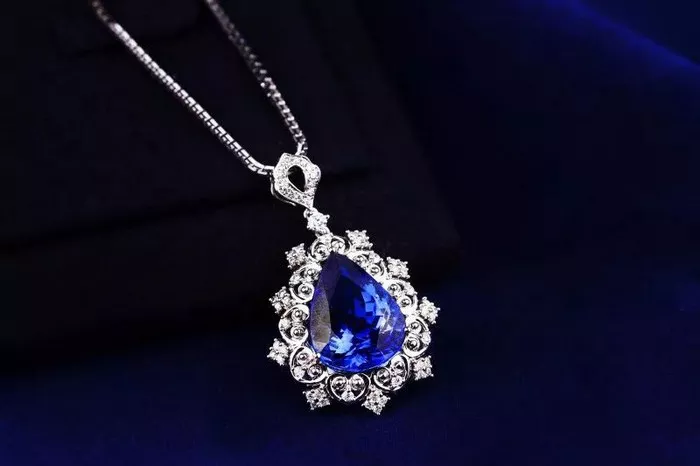Tanzanite, a vibrant blue-violet variety of the mineral zoisite, has captured the attention of gem enthusiasts and collectors alike since its discovery in the 1960s. Found exclusively in Tanzania, this gemstone is renowned for its unique color and rarity. Among the various shades of tanzanite, violet tanzanite stands out for its distinct hue, but how does this affect its value? In this article, we will explore the factors that contribute to the value of violet tanzanite, including its color, clarity, cut, carat weight, and market demand.
Understanding Tanzanite
Before delving into the specifics of violet tanzanite’s value, it is essential to understand what tanzanite is and what makes it unique.
Origin: Tanzanite is found only in a small area near Mount Kilimanjaro in Tanzania. This limited geographic range contributes significantly to its rarity and value.
Color: Tanzanite exhibits a unique trichroism, meaning it can show three different colors when viewed from different angles: blue, violet, and burgundy. The most sought-after tanzanite displays a rich blue-violet hue.
Formation: The gemstone is formed under specific geological conditions, which makes its occurrence rare. The combination of heat and pressure over millions of years has resulted in the formation of this beautiful stone.
Factors Influencing the Value of Violet Tanzanite
The value of violet tanzanite, like other gemstones, is influenced by several key factors:
1. Color Quality
Hue: The most desirable tanzanite colors are deep blue and violet. Violet tanzanite that exhibits a rich, saturated hue is more valuable than stones with a lighter or washed-out appearance.
Tone and Saturation: The tone (lightness or darkness) and saturation (intensity of color) also play a crucial role. Stones that are darker and more saturated tend to command higher prices.
Color Zoning: Some tanzanite stones may display color zoning, where different areas of the stone exhibit different colors. While some collectors may find this interesting, it can detract from the overall value if the zoning is pronounced.
2. Clarity
Inclusions: Like many gemstones, tanzanite can contain inclusions—internal flaws that can affect its clarity. Stones with fewer inclusions are generally more valuable.
Transparency: The clarity of the stone also impacts its value. Transparent stones that allow light to pass through without obstruction are more desirable.
3. Cut
Proportions: The quality of the cut can enhance or detract from the stone’s appearance. Well-proportioned cuts that maximize the stone’s brilliance and color are more valuable.
Shape: Common shapes for tanzanite include oval, round, and cushion cuts. Unique or custom cuts can also add to the stone’s appeal and value.
See Also: Brazilian Tanzanite
4. Carat Weight
Size: Generally, larger tanzanite stones are more valuable, as they are rarer than smaller ones. However, the quality of the stone must also be considered, as a smaller, higher-quality stone can be more valuable than a larger, lower-quality one.
Market Trends: The demand for larger stones can fluctuate based on market trends, affecting their value.
5. Market Demand
Popularity: The popularity of tanzanite has increased significantly since its discovery. As more people become aware of its beauty and rarity, demand has risen, which can drive up prices.
Investment Potential: Some collectors view tanzanite as a potential investment, further increasing demand, particularly for high-quality stones.
6. Treatments
Enhancements: Many gemstones undergo treatments to enhance their appearance. Tanzanite is often heat-treated to improve its color. While this is a common practice, untreated stones typically command higher prices.
Disclosure: Transparency about any treatments is essential in the gemstone market. Buyers are often willing to pay a premium for untreated stones.
Comparing Violet Tanzanite to Other Gemstones
To better understand the value of violet tanzanite, it is helpful to compare it to other gemstones. Below is a table that highlights some key differences:
| Gemstone | Color | Rarity | Value Range (per carat) | Market Demand |
|---|---|---|---|---|
| Tanzanite | Blue, Violet | Rare | $300 – $1,500 | High |
| Sapphire | Blue, Yellow, Pink | Common | $500 – $5,000 | High |
| Amethyst | Purple | Abundant | $10 – $100 | Moderate |
| Alexandrite | Color-changing | Very Rare | $2,000 – $15,000 | High |
Current Market Trends
The market for violet tanzanite has evolved over the years, influenced by various factors:
Global Economic Conditions: Economic stability can affect luxury purchases, including gemstones. During economic downturns, demand for high-value items may decrease.
Fashion Trends: The popularity of certain colors in fashion can influence gemstone demand. As violet and blue hues become trendy, tanzanite may see an increase in interest.
Sustainability and Ethical Sourcing: Consumers are increasingly concerned about the ethical implications of their purchases. Gemstones sourced responsibly are more appealing to buyers, which can affect their value.
Conclusion
In conclusion, violet tanzanite is a valuable gemstone that commands attention due to its unique color, rarity, and beauty. The value of violet tanzanite is influenced by several factors, including color quality, clarity, cut, carat weight, market demand, and any treatments it may have undergone. As the market for gemstones continues to evolve, tanzanite remains a sought-after choice for collectors and investors alike.
While the price range for violet tanzanite can vary widely, high-quality stones can be a significant investment. Understanding the nuances of this gemstone can help buyers make informed decisions and appreciate the beauty and value that violet tanzanite has to offer.


